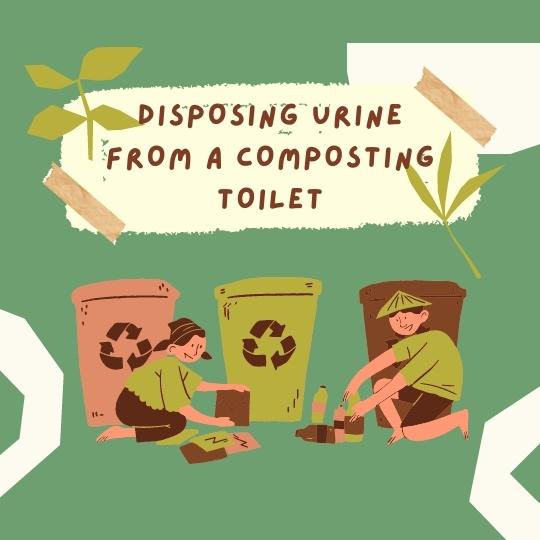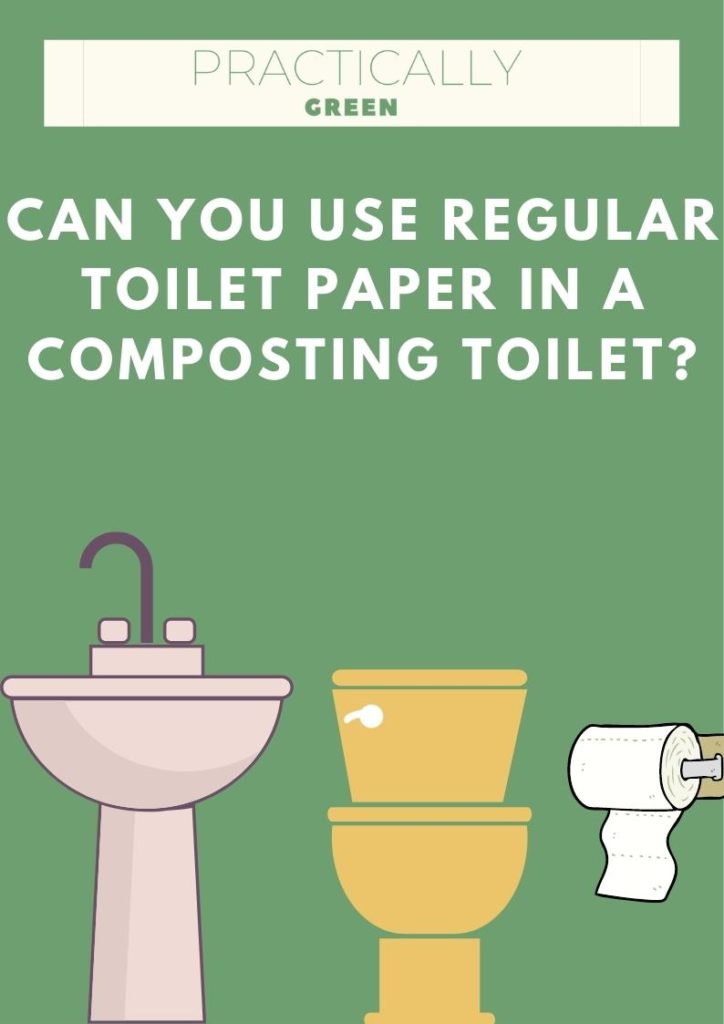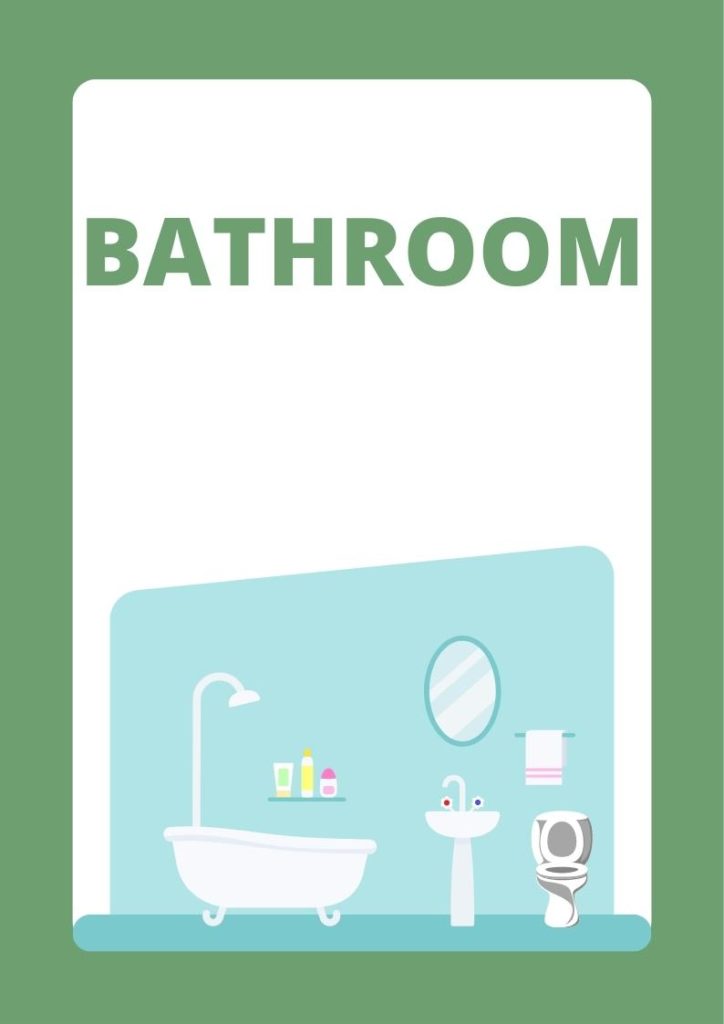
If you are considering a composting toilet for your home, it can be overwhelming to know where to start!
How do you use one? Can you pee in a composting toilet? How often should you empty the composting chamber? How do I dispose of the waste?
This blog post will answer all those questions and more. Read on for tips that will have you using a composting toilet like a pro in no time!
How do composting toilets work?
A composting toilet is a type of dry toilet that treats feces through a biological process known as composting. There are 2 types of composting toilet systems; self-contained, also known as a split-system composting toilet, and central composting toilet.
This process decomposes organic elements, transforming human waste into compost. Microorganisms undertake to compost under controlled aerobic circumstances (primarily bacteria and fungus).
Because the majority of these toilets do not use water to clean or flush, they are referred to as “dry toilets” or “waterless toilets.”
After each use, a carbon addition such as sawdust or peat moss is supplied to assist in the decomposition of the solid waste in various types of composting toilets. This method creates air gaps for the aerobic decomposition of human excrement.
This also raises the amounts of carbon and nitrogen, which reduces possible smells.
Read on here to learn more about how composting toilets work.
A composting toilet is ideal for holiday homes, your own house, RVs, cabins, and pretty much any other residence you can think of!
How to use composting toilets?
Using composting toilets for day-to-day use is a lot more simple than many people would think.
Let’s begin by looking through:
Step by step guide on how to use composting toilets

Step 1:
Begin by putting compost material such as peat moss or coconut coir- these materials tend to help with reducing bacteria that typically make the toilet smell.
Step 2:
Sit on the toilet seat if you need to urinate. Don’t be concerned about where the liquid is going as it will enter the liquid chamber via the openings.
This is done to prevent the toilet from smelling when the liquid and solid feces combine. Adding a little moisture by adding water can dilute the liquid waste, but you will have to empty it more frequently.
Step 3:
If you’re using the toilet for a ‘number 2’ – or in other words, solid human waste- engage the trap door (bear in mind, there may be different technicalities depending on which composting toilet product you buy) as soon as you sit.
The toilet paper goes in the waste container with the other solid wastes- Make sure you use toilet paper that will degrade and decompose really fast.
Step 4:
Some of the composite toilet designs have a waste-stirring mechanism. Stirring permits the mixing of solid wastes with dry turf. The ventilator delivers air to dry and prevent the solid waste from stinking.
Step 5:
Every 3 to 4 days empty the liquid waste to avoid odor. After around 90 uses, dump the solid trash. You may discharge the solid waste into an organic bag since it will easily decompose.
You may even vacuum it into your compost heap and utilize it in your garden later on.
How do you dispose of urine from a composting toilet?

Peeing in compost piles is possible!
Through the microbiological process of decomposition, urine and other organic waste in a compost pile will decompose into fertilizing material. The bacteria in a compost pile that generate heat are big enough to avoid being destroyed by ammonia or urea.
Composting toilets make it simple to separate and utilize solid waste for fertilization on the one hand, and to separate and use liquid manure as mulch in a water-rich landscape on the other.
When you don’t filter out germs before exposing them to an open environment, adding liquid manure from septic tanks might cause environmental concerns.
Find out how to dispose of solid and liquid waste from composting toilets in detail.
How human waste can be used as fertilizer
From plastic pollution to nuclear waste, waste is a major problem in the world today.
Although there are many types of waste to be concerned about, one type of human waste has not been given much attention, and that’s waste produced from sewer systems.
This is typically referred to as sewage sludge, which is the solid materials removed from wastewater by a dewatering process such as centrifugation or filtration.
The two most common treatment methods for this type of sewage sludge are anaerobic digestion and aerobic composting.
Anaerobic digestion produces biogas that can then be burned for heat and power while aerobic composting produces humus, which is nutrient-rich compost material!
Read on here to learn more about the history and all the ins and outs of human waste as fertilizer.
What to do with composting toilet waste
Waste from a composting toilet is made up of organic materials and must be disposed of properly.
First off, where should you dispose of composting toilet waste?
Composting toilets produce a lot less solid waste than traditional flush toilets because they use a natural decomposition process to break down the material.
This means that there is no need for plumbing systems or septic systems as would be found in other types of homes or buildings.
There are several options for disposing of this kind of organic matter, This can include:
Designated dump stations:
It’s possible to take your composting toilet waste to a designated dump station and dispose of it there to be processed at sewage sludge or wastewater treatment plants.
If you have a designated dump station near your location, ask them about their protocol for loading. Some states require liquid added to solid waste and vice versa.
Garden/Backyard:
If you have a garden or backyard, another good option would be to use it as a disposal place for composting toilets. Don’t mix the waste with other things before it’s processed; that could potentially introduce harmful bacteria or pathogens into the composted material.
Organic matter like human poop can be turned into the soil by the use of worms, bacteria, fungi, etc. This is beneficial when used on plants and trees as human poop has rich nutrients as fertilizer.
Established compost pile:
A compost pile is the best place for decomposing solid waste to collect and mature. To allow for this process, the pile should be built over some bulking material, such as a bed of straw or hay, wood chips or sawdust, or some other kind of natural cover. You can even chuck in some food waste, but check it’s not too wet first.
You must use a compost pile with adequate aeration and moisture for aerobic bacteria decomposition, to ensure pathogen reduction in the waste material.
The heap should be located far enough away from your house or garden to retain sensible odors and must not be conditioned to use as ready-made potting soil.
How to flush a toilet without water
Are you able to flush a toilet without using water?
You might be shocked to learn that there is more than one option available. The idea is to utilize gravity to flush a toilet by filling a pot or bucket with water and utilizing it as an alternate source.
It’s helpful to know how a toilet tank works in order to fully comprehend this issue.
When you flush, water is essentially held in the tank. Freshwater, often filtered to drinking water standards, is used to refill the tank while waste is discharged into a holding area. The process is repeated until the toilet is clean and ready to use.
Knowing this, you should be able to see why flushing with water usually works, yet flushing without water might be challenging at times.
Read on here for full insight into how a toilet actually flushes without using ANY water!
Can you use regular toilet paper in a composting toilet?

Regular toilet paper can be used with a compost toilet- toilet paper can be put directly into the solids bin, or solids waste chamber of the composting toilet.
It will break down in there along with other human excreta. But it is best to avoid using too much as depending on the material of the toilet paper, it can affect the decomposition process.
How much toilet paper can be put into the compost chamber?
Although there is no limit to how much toilet paper you can use, it’s best to consider the capacity of the toilet bowl as you don’t want it to overflow.
It’s also important to consider the environmental impacts of some types of toilet paper – I would suggest using one that is advertised for RVs or boats.
These are typically more eco-friendly and are one way you continue to help the environment without depriving yourself of a basic necessity. They are eco-friendly as they tend to avoid using harmful chemicals in the dying and bleaching process of their manufacture.
One suggestion is experimenting with your tissue in smaller quantities to ensure it decomposes easily so as not to affect the decomposition process.
How often do you have to clean a composting toilet?
As we mentioned compost toilets need to be emptied every 3-4 days, although this can vary depending on what compost toilets product you decide to install and purchase.

However, it is also vital to ensure that a thorough clean is carried out for composting toilets every few months, ideally every 2-3 months.
This is so that you are maintaining good sanitation and hygiene, and ensuring the composting bin is thoroughly cleaned out, preventing bacteria build-up and bad odor.
When you clean your composting toilet, be sure not to let any chemicals enter the chamber, as this can mess with the composting process.
Do composting toilets stink?
When managed correctly, composting toilets should not stink.
Toilets compost using high-carbon content, and the odors of human waste are neutralized. They produce a perfect environment in which breakdown processes may commence with germs, good bacteria, and other microorganisms.
The end result of a composting toilet is soil, which smells like a forest floor. A rich and fertile soil.
Usually, a few scoops of sawdust, coconut coir, or other high-carbon dry material are inserted into the toilet after use.
The high-carbon organic substance neutralizes the scent right away and stimulates microorganisms to start the natural decomposition and composting process.
How do you know when to empty a composting toilet?
Knowing when to empty a composting toilet is very simple and largely depends on the capacity and volume of the composting toilet, and also how many people use the toilet.
When the pile in the composting chamber is full, you will know that the contents require disposal.
As a typical guide, empty contents from the liquids and solids tank every 3-4 days. Your composting toilet may have a guide for the liquid container, to show when it is getting full.
Where do you dump your waste from a composting toilet?
Emptying a composting toilet can be a harmful process if carried out incorrectly.
A disposal station in a toilet urine bottle is the perfect place for the safe disposal of the pee collected. These dumping stations process waste liquid in a waste treatment facility and have sewage sludge rules.
There are also disposal stations for solid excreta, and some disposal points have stations for both solids and liquids.
It is important to wear a mask and gloves to protect yourself from inhaling bacteria that could potentially be harmful to you.
Do not empty the toilet in the vicinity of waterways or water supply. Make sure your dumping site with the nearest water body is at least two hundred feet away.
Conclusion
Human consumption and freshwater pollution reached a stage where scarcity of water in the coming decades may limit agricultural productivity, ecosystem functionality, and the urban supply of drinking water.
There are many different companies that produce and manufacture composting toilets to choose from- this includes Airhead, Nature’s Head composting toilets, Sun mar, and Separett villa composting toilets.

